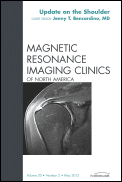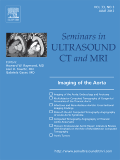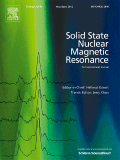
APPLIED MAGNETIC RESONANCE
Scope & Guideline
Unveiling the Potential of Magnetic Resonance Science
Introduction
Aims and Scopes
- Magnetic Resonance Imaging (MRI):
The journal frequently publishes research on MRI techniques, including developments in imaging technologies, applications for medical diagnostics, and the study of materials using MRI. - Electron Paramagnetic Resonance (EPR):
EPR is a central theme, with studies often exploring spin dynamics, relaxation mechanisms, and applications in various fields such as biology, chemistry, and materials science. - Nuclear Magnetic Resonance (NMR):
NMR studies are prevalent, focusing on structural analysis, molecular dynamics, and the development of new NMR methodologies for enhanced sensitivity and resolution. - Materials Science and Engineering:
The journal emphasizes research on the magnetic properties of materials, including nanostructures, thin films, and their applications in electronics and photonics. - Biological Applications of Magnetic Resonance:
There is a significant focus on the use of magnetic resonance techniques to study biological systems, including understanding molecular mechanisms and developing diagnostic tools. - Quantum Technologies:
Emerging applications of magnetic resonance in quantum computing and quantum information science are highlighted, showcasing innovative uses of EPR and NMR in this cutting-edge field.
Trending and Emerging
- Deep Learning and AI in Magnetic Resonance:
The integration of artificial intelligence and deep learning techniques in MRI and EPR applications is gaining momentum, showcasing advancements in image analysis and data interpretation. - Hybrid Magnetic Resonance Techniques:
There is an increasing trend towards the use of hybrid techniques that combine EPR, NMR, and MRI, allowing for more comprehensive studies of materials and biological systems. - Nanotechnology and Magnetic Resonance:
Research exploring the applications of magnetic resonance in nanotechnology, particularly in the characterization and manipulation of nanomaterials, is on the rise. - Biomolecular Dynamics and Interactions:
Emerging studies focus on the dynamics of biomolecules using advanced magnetic resonance techniques, providing insights into complex biological processes. - In Vivo and Clinical Applications:
There is a growing emphasis on the application of magnetic resonance techniques in clinical settings, particularly in cancer diagnostics and treatment monitoring, reflecting a translational research focus.
Declining or Waning
- Traditional EPR Applications:
Research focused solely on traditional EPR applications without integration into broader interdisciplinary studies seems to be waning, as newer methodologies and hybrid approaches gain traction. - Static Magnetic Field Studies:
Investigations that rely solely on static magnetic field measurements without considering dynamic or time-resolved aspects are appearing less frequently, reflecting a shift towards more complex analyses. - Basic Theoretical Studies:
Purely theoretical studies in EPR and NMR without practical applications or experimental validation seem to be declining, as the journal increasingly favors applied research with tangible outcomes. - Single Technique Focus:
Papers focusing exclusively on one magnetic resonance technique, such as either EPR or NMR, without interdisciplinary connections are becoming less common, indicating a trend towards integrated approaches.
Similar Journals

JACC-Cardiovascular Imaging
Advancing the Future of Cardiovascular ImagingJACC-Cardiovascular Imaging, published by Elsevier Science Inc, is a premier journal that focuses on the rapidly evolving field of cardiovascular imaging, providing a vital platform for the dissemination of high-quality research and clinical studies. With an impressive impact factor and ranking within the top tier of cardiology and radiology specialties, the journal is recognized for its commitment to advancing knowledge in diagnostic imaging techniques, including echocardiography, MRI, and CT in cardiovascular contexts. Since its inception in 2008 and converging through 2024, JACC-Cardiovascular Imaging has maintained a distinguished position, currently ranking Q1 both in Cardiology and Cardiovascular Medicine as well as in Radiology, Nuclear Medicine and Imaging. This ensures its relevance and influence, as evidenced by its Scopus rankings—ranked #2 in Radiology and #8 in Cardiology, placing it in the top echelons of scholarly output. Although it does not offer open access, the journal's content is crucial for researchers, clinicians, and students who seek to remain at the forefront of cardiovascular imaging advancements.

MAGNETIC RESONANCE IMAGING
Pioneering Innovations in Magnetic Resonance TechnologyMAGNETIC RESONANCE IMAGING, published by Elsevier Science Inc, stands at the forefront of research in the fields of Biomedical Engineering, Biophysics, and Radiology, Nuclear Medicine and Imaging. Since its inception in 1982, the journal has become a vital resource, currently enjoying a Q2 ranking in its respective categories as of 2023, underscoring its influence and significance within the scientific community. With an ISSN of 0730-725X and an E-ISSN of 1873-5894, it provides an essential platform for disseminating groundbreaking studies and advancements in magnetic resonance imaging technology and applications. Researchers, professionals, and students benefit from its comprehensive articles that address both theoretical advancements and practical implementation in clinical settings. The journal's commitment to advancing knowledge is reflected in its recognition in Scopus Rankings, where it lies in the 67th percentile for Radiology, Nuclear Medicine and Imaging. By fostering an environment of critical dialogue and innovation, MAGNETIC RESONANCE IMAGING remains a cornerstone publication for those dedicated to pioneering the future of imaging science.

Magnetic Resonance Imaging Clinics of North America
Transforming the future of imaging with impactful research.Magnetic Resonance Imaging Clinics of North America, published by W B Saunders Co-Elsevier Inc, serves as a vital resource in the field of radiology, nuclear medicine, and imaging. With a Q2 ranking in the 2023 category quartiles, it reflects its significance and contribution to advancing the understanding and applications of magnetic resonance imaging. Established in 1993, this journal has continuously provided insightful reviews and clinical techniques that bridge the gap between theoretical research and practical application, making it essential for both seasoned practitioners and emerging professionals. Although it does not offer open access, the journal boasts a robust readership due to its high-impact research articles and comprehensive reviews, facilitating the ongoing education and development of its audience. Operating out of Philadelphia, PA, this journal aims to enhance clinical practices and patient care through disseminating cutting-edge knowledge in MRI.

Journal of the Korean Magnetic Resonance Society
Exploring the Frontiers of Magnetic Resonance TechnologyJournal of the Korean Magnetic Resonance Society, published by the Korean Magnetic Resonance Society, serves as a premier platform for advancing the field of magnetic resonance research. This journal, with the ISSN 1226-6531, is dedicated to disseminating innovative studies and critical reviews in areas encompassing magnetic resonance imaging, spectroscopy, and related technologies. Based in Seoul, South Korea, it aims to foster collaboration and knowledge exchange among researchers, professionals, and students globally. Although it follows a traditional subscription model, the journal is committed to high-quality, peer-reviewed content, ensuring that published articles undergo rigorous evaluation. By bridging the gap between academia and industry, the Journal of the Korean Magnetic Resonance Society plays a vital role in pushing the boundaries of magnetic resonance science, making it essential reading for anyone engaged in this cutting-edge field.

Physics & Imaging in Radiation Oncology
Bridging Physics and Oncology for Enhanced Treatment OutcomesPhysics & Imaging in Radiation Oncology is a premier journal dedicated to advancing the interdisciplinary field of radiation oncology through innovative research and imaging technologies. Published by Elsevier, this open-access journal has made its mark since its inception in 2017, ensuring that groundbreaking findings are accessible to a broad audience. With a strong focus on the integration of physics, imaging techniques, and oncology, the journal occupies esteemed positions in the academic landscape, ranking in the top quartile for Radiation and Radiology, Nuclear Medicine and Imaging as of 2023. The journal serves as a platform for researchers, professionals, and students to share insights and foster collaboration, ultimately improving patient outcomes through enhanced imaging and treatment modalities. Based in Ireland and operating from Radarweg 29, 1043 NX Amsterdam, Netherlands, the journal aims to bridge the gap between theoretical physics and practical applications in clinical settings.

SEMINARS IN ULTRASOUND CT AND MRI
Pioneering Research in Medical Imaging TechniquesSEMINARS IN ULTRASOUND CT AND MRI is a prestigious academic journal dedicated to advancing the fields of radiology, nuclear medicine, and imaging. Published by W B SAUNDERS CO-ELSEVIER INC, this journal has been a cornerstone of scholarly communication since 1984, providing a platform for high-quality research and review articles that enhance the understanding of diagnostic imaging techniques. With a current impact factor reflected in its Q3 quartile ranking among 333 journals in its category, it remains a valuable resource for researchers and clinicians alike. The journal's focus includes but is not limited to innovations in ultrasound, computed tomography, and magnetic resonance imaging, making it essential for professionals looking to stay at the forefront of imaging science. While it operates under a subscription model, its extensive archive of influential articles ensures ongoing access to critical knowledge and developments in the field. With a commitment to quality and relevance, SEMINARS IN ULTRASOUND CT AND MRI continues to contribute significantly to the evolving landscape of medical imaging.

West African Journal of Radiology
Advancing Radiology: Bridging Research and Practice in West AfricaWest African Journal of Radiology is a prominent platform dedicated to the dissemination of innovative research and advancements within the field of radiology, particularly in the West African context. Published by Wolters Kluwer Medknow Publications, this journal plays a crucial role in enhancing radiological practices and education across the region, contributing to improved healthcare outcomes. Although the journal operates under a subscription model, it is committed to fostering knowledge exchange among researchers, professionals, and students alike. With its focus on original research, case studies, and reviews, the West African Journal of Radiology serves as an invaluable resource for those looking to stay abreast of the latest trends and developments in radiological science. As the field evolves, this journal aims to bridge the gap between research and clinical application, making it essential reading for those involved in radiological practices.

Forensic Imaging
Exploring the intersection of pathology, medicine, and imaging.Forensic Imaging is a premier international journal dedicated to advancing the field of forensic science through the analysis and implementation of imaging techniques. Published by ELSEVIER, this open access journal provides a platform for researchers, professionals, and students to disseminate innovative studies that bridge the disciplines of Pathology, Forensic Medicine, and Radiology. Since its inception in 2020, it has gained recognition and holds a respectable Q3 ranking in its categories for both Pathology and Forensic Medicine and Radiology, Nuclear Medicine and Imaging, reflecting its commitment to high-quality, impactful research. The journal's practical focus on imaging methodologies offers valuable insights into forensic investigations and enhances professional practices, making it an essential read for those involved in forensic research and application. Available in both print and online formats, Forensic Imaging serves as a vital resource for fostering breakthroughs in the analysis of forensic evidence.

SOLID STATE NUCLEAR MAGNETIC RESONANCE
Transforming Understanding through High-Impact NMR ResearchSOLID STATE NUCLEAR MAGNETIC RESONANCE, published by Academics Press Inc Elsevier Science, stands as a prominent journal in the fields of chemistry, instrumentation, nuclear and high energy physics, and radiation, offering a unique platform for researchers and professionals to disseminate their findings and insights. Since its inception in 1992, the journal has continuously showcased innovative research that enhances our understanding of solid-state NMR techniques and applications, contributing significantly to advancements in both theoretical and practical domains. With an impressive impact factor and achieving Q2 rankings across multiple disciplines, it represents a vital resource for academics and industry experts alike, fostering interdisciplinary collaboration and knowledge sharing. While currently not open access, researchers can access valuable content through institutional subscriptions, ensuring a wide reach and influence in the scientific community. The journal's commitment to high-quality publishing makes it a must-read for those at the forefront of nuclear magnetic resonance research.

Biomolecular NMR Assignments
Unraveling molecular mysteries with cutting-edge spectroscopy.Biomolecular NMR Assignments is a prominent academic journal dedicated to advancing the field of biomolecular nuclear magnetic resonance (NMR) spectroscopy. Published by SPRINGER, this journal aims to provide a platform for researchers to share significant findings, methodological advancements, and in-depth analyses related to protein structure, dynamics, and interactions through NMR techniques. Although not currently open access, it serves as a valuable resource for those in the fields of Biochemistry and Structural Biology, having established a respectable impact factor reflected in its category rankings within these disciplines. With its coverage spanning from 2007 to 2024, Biomolecular NMR Assignments continues to facilitate the exchange of knowledge among professionals and students, contributing to the growth and enhancement of contemporary scientific inquiry. Explore the intricacies of biomolecular studies in the Netherlands and beyond, where critical insights into molecular behavior and function converge.